English clockmaker William Clement is credited with developing the grandfather form in 1670.
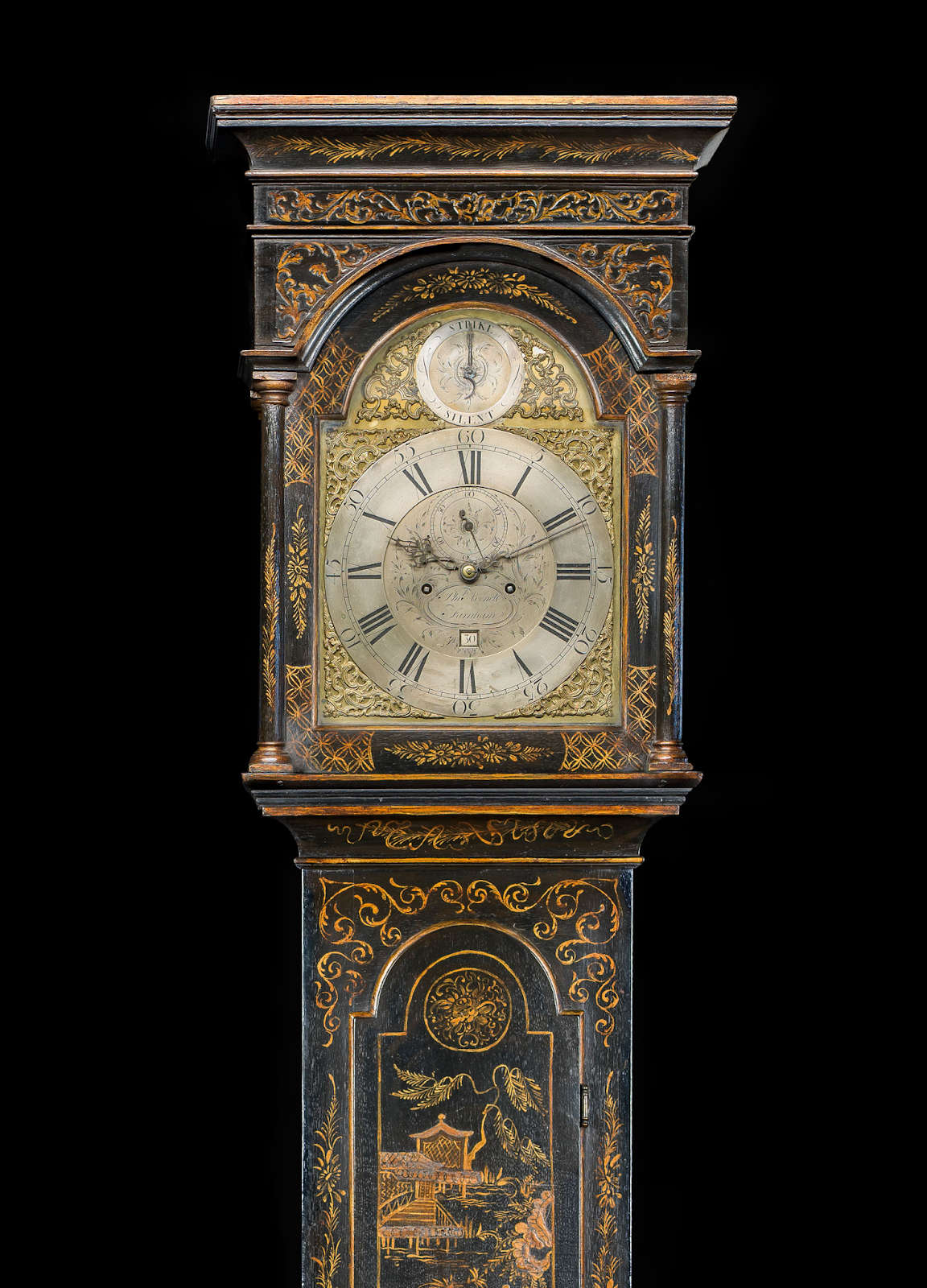
× 
In this guide, we explore the history of the longcase clock. Often called a grandfather clock, we also explain the difference between this and a grandmother clock.
Dutch scientist Christiaan Huygens, inspired by the work of Galileo, reportedly determined the mathematical formula relating pendulum length to time and invented the first pendulum clock in 1657.
But other sources argue that the invention of the anchor escapement mechanism by Robert Hooke one year later in 1658 led to the development of the longcase clock.
This increased timekeeping accuracy to within 15 seconds in a day. Longcase clocks are typically 1.8-2.4 metres or 6-8 feet tall with an enclosed pendulum and weights, suspended by either cables or chains.
The longcase clock housed the pendulum mechanism. Clock faces began to feature enamel and hand-painted ceramics over time, with the clock cases made of wood.
What is a grandfather clock?
A grandfather clock is a tall, freestanding pendulum clock, usually housed in a wooden case that stands on the floor.
These clocks often feature ornate faces and chimes that sound on the hour or quarter-hour. English clockmaker William Clement is credited with developing the grandfather form in 1670.
Pendulum clocks were the world's most accurate timekeeping technology until the early 20th century and they provided the time for both households and businesses.
Pendulum clocks were the world's most accurate timekeeping technology until the early 20th century and they provided the time for both households and businesses.
Grandfather clocks were an instant hit with the European nobility and are still among the most popular types today.
The term "grandfather clock" comes from the 1876 song My Grandfather’s Clock by Henry Clay Work.
The term "grandfather clock" comes from the 1876 song My Grandfather’s Clock by Henry Clay Work. The song described a longcase clock that stopped working when the grandfather in the story died and the phrase caught on as a popular name for the style.
Grandmother clock vs Grandfather clock – what’s the difference?
A grandmother clock is a smaller version of a grandfather clock, usually standing 5-6 feet or 1.5-1.8 metres tall.
The term “grandmother clock” simply followed the naming style of the grandfather clock to reflect the size difference.
- It still uses a long pendulum and weights to keep time, but the case and design are more compact and often more delicate.
- These clocks became popular in the early 20th century as people wanted traditional floor clocks that would fit into smaller homes.
- Their designs also reflect this size difference, with grandmother clocks often featuring slimmer cases and lighter details.
Both types work in the same way using a pendulum and weights, but grandmother clocks were made to suit smaller rooms or homes.
A granddaughter clock is an even smaller version of a grandmother clock, usually standing between 3-5 feet or 0.9-1.5 metres tall. It still follows the traditional longcase style but in a more compact and decorative form.
These clocks often suit smaller spaces like hallways or bedrooms, and some include modern features such as quartz movement instead of a pendulum. The name continues the family-style naming tradition based on size and proportion.
Examples: Antique longcase clocks in our collection
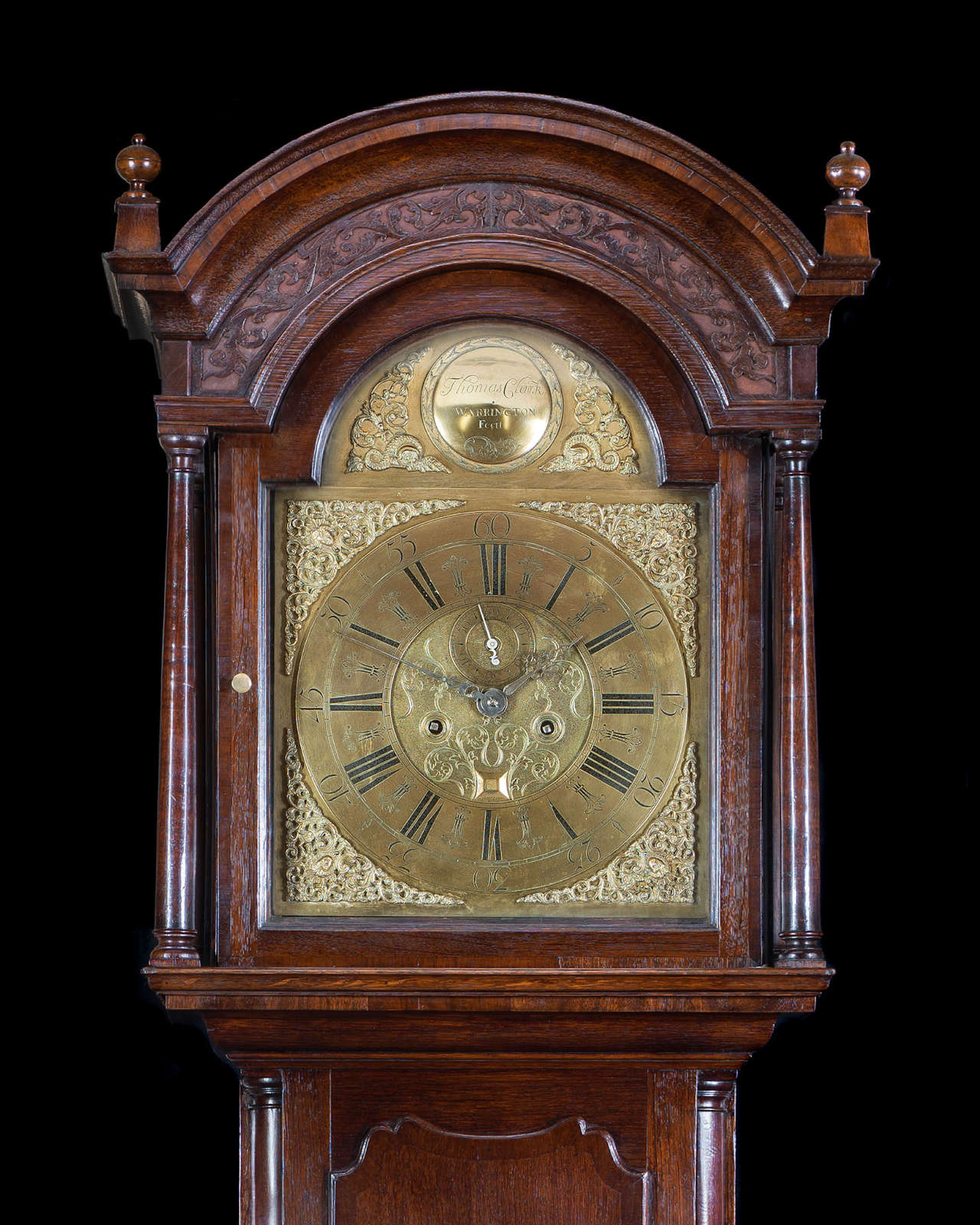
× 
This elegant 18th century oak Georgian longcase clock has an arched hood, decorated with blind fretwork which frames the lunette engraved to denote the maker, Thomas Clark of Warrington.
The rest of the brass dial is adorned by Baroque spandrels, framing a chapter ring with engraved Roman and Arabic numerals. At the centre of the dial is a subsidiary seconds dial and a date window.
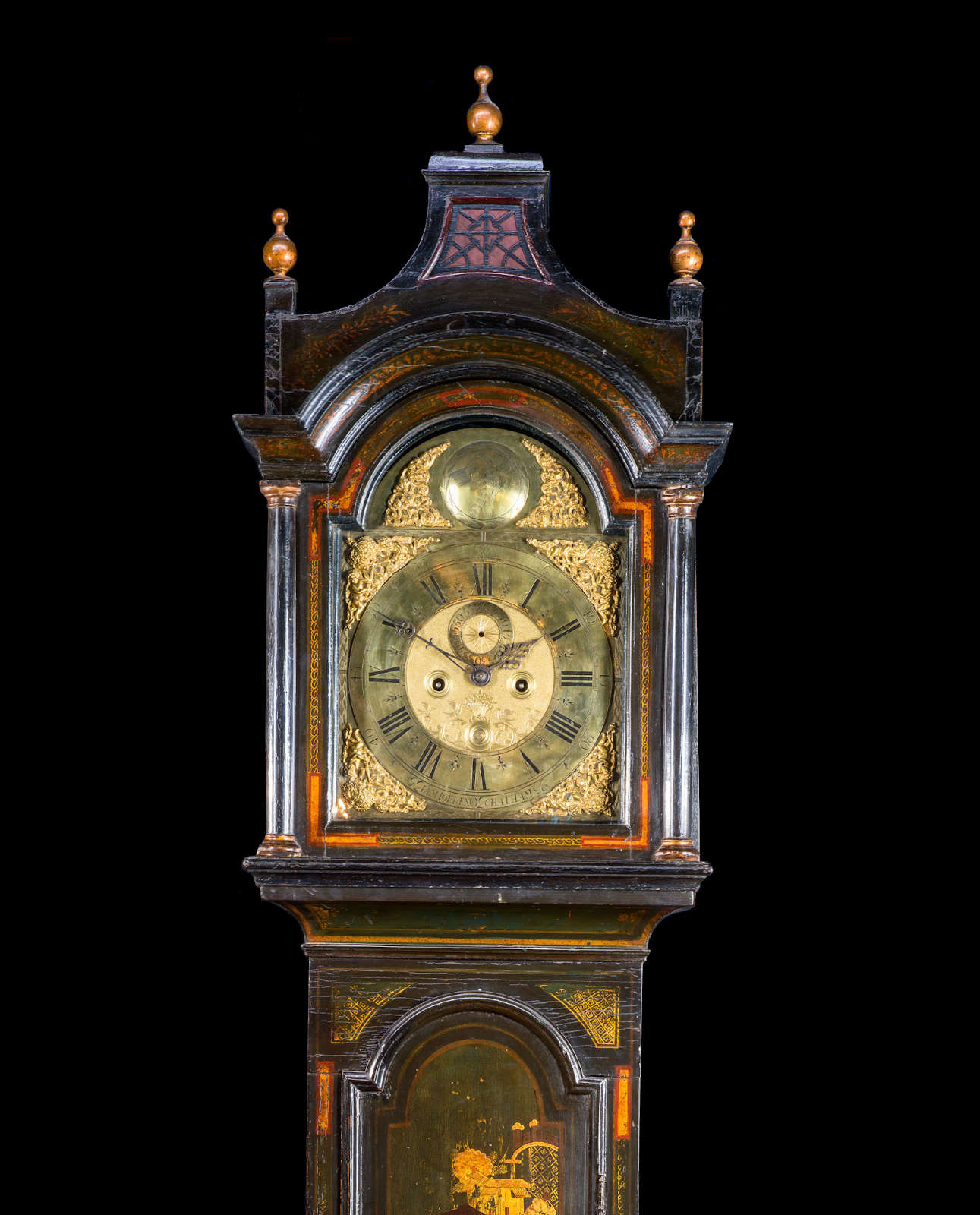
× 
Above is a Japanned longcase clock, decorated with chinoiserie scenes and gilt highlights. The process involves applying a coat of paint to a metal or wooden surface and baking it to create a durable, often glossy finish, popular in the 18th and 19th centuries.
Designed by James Jorden, the brass eight day clock is engraved with a basket of flowers and birds, with a seconds dial and date aperture signed 'Iam Iorden, Chatham', with gilt putti and crown spandrels.
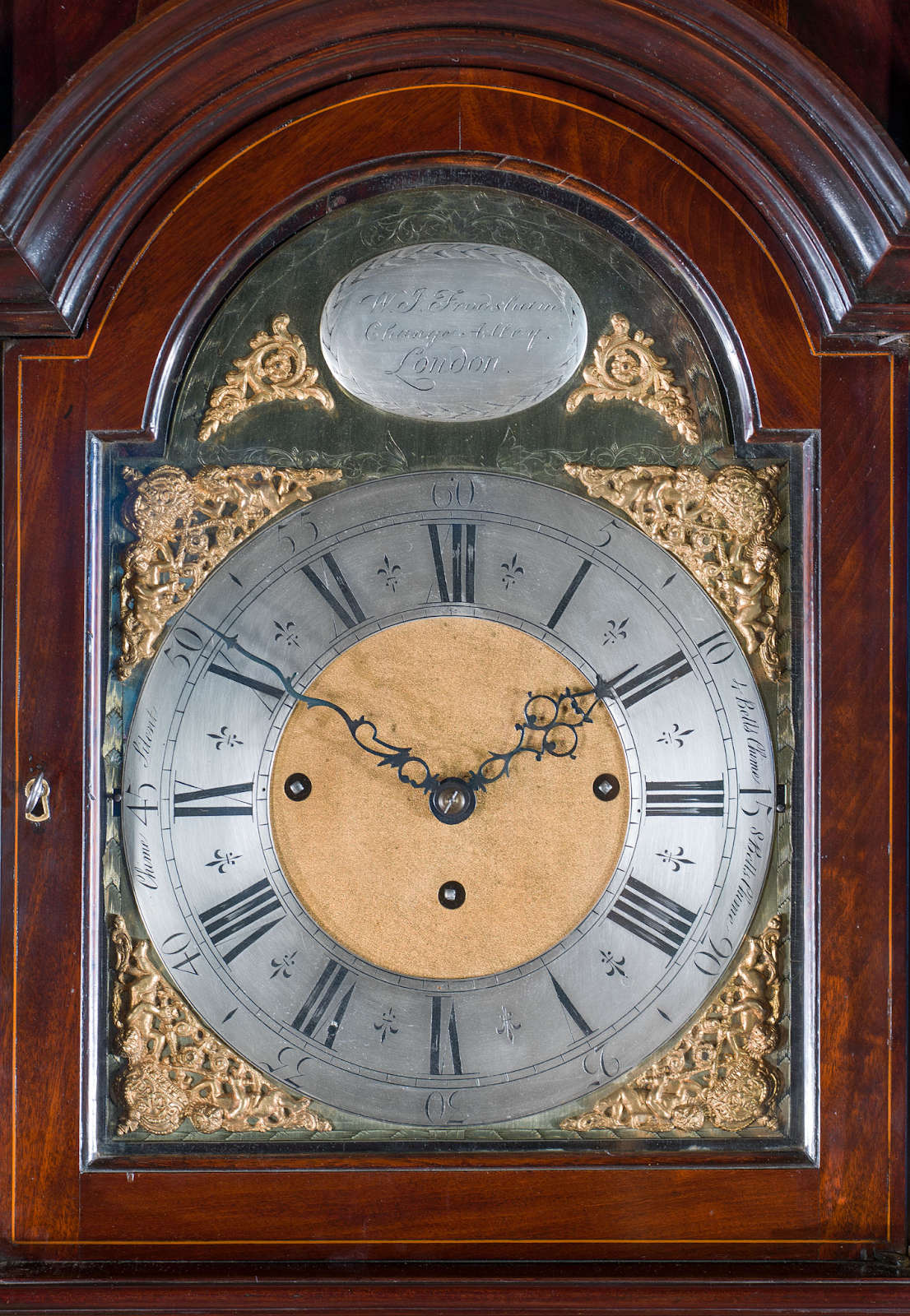
× 
Moving on, this 19th century marquetry longcase clock has fine marquetry, almost Rococo in design, depicting two lovers walking within a pastoral scene. It is framed by foliate scrolls and floral sprays.
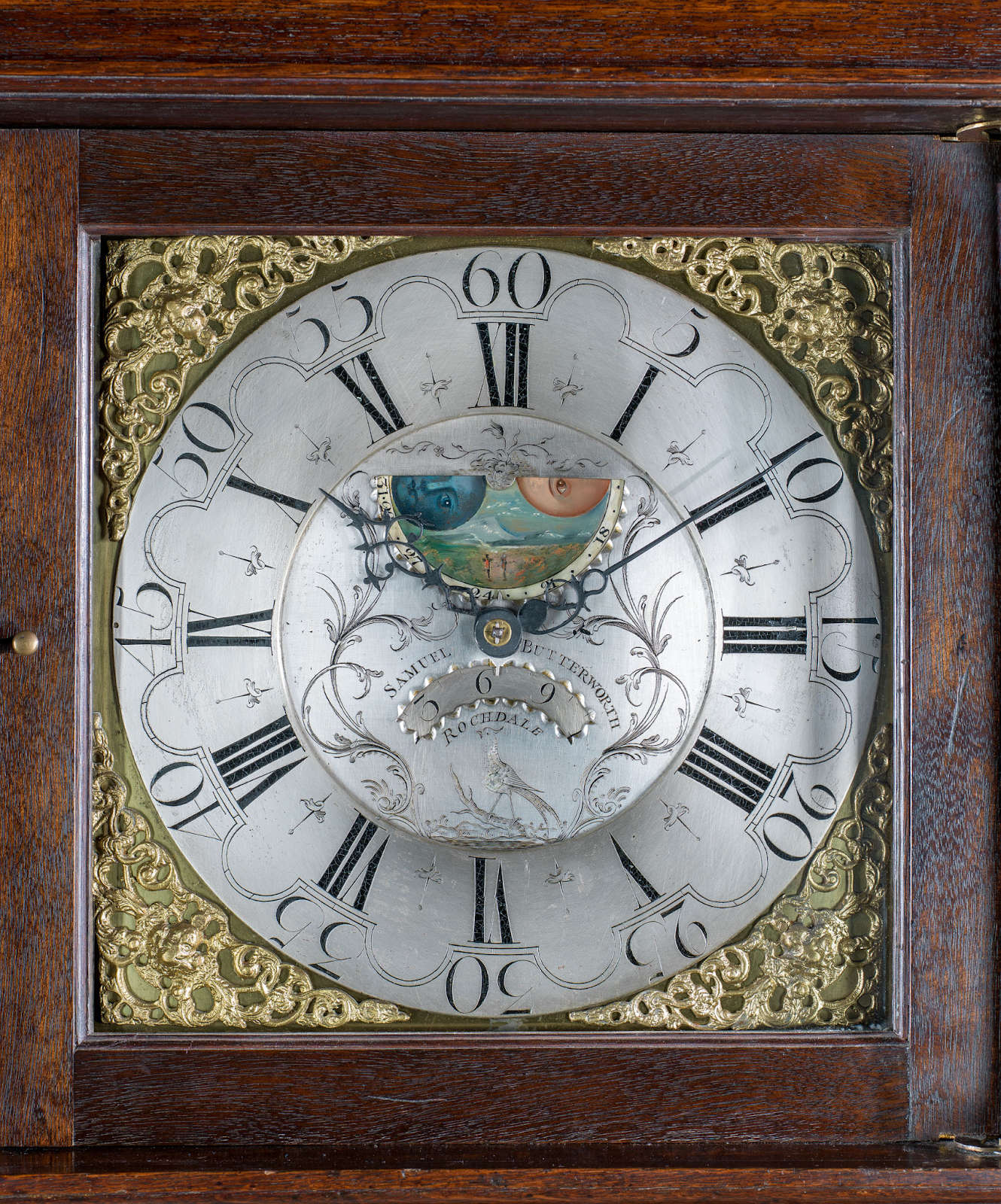
× 
The above elegant longcase clock with moondial has an engraved silvered dial and Roman numerals, framed by gilt spandrels to the corners. To the centre of the dial is a date aperture, and also a stunning arched moondial with hand painted decoration.
Grandfather clocks were an instant hit with the European nobility and are still among the most popular types today.
Final thoughts: Antique longcase clocks
We hope you found this article on longcase clocks interesting and informative.
For further reading, take a look at our guides on:
Antique clocks reflect their timeless elegance but also quality craftsmanship.
They come in many forms, from the grandest of longcase clocks to the exquisite beauty of a carriage clock that can rest on an antique fireplace.
The longcase clock is arguably the most imposing but magnificent of all, standing taller than their owners and commanding attention with their authoritative ticking and striking.
Here at Westland London, we have a dedicated restoration department with experience in all areas of clock restoration.
We encourage you to browse through our stunning collection of antique clocks and if you have any queries, please don’t hesitate to contact us.